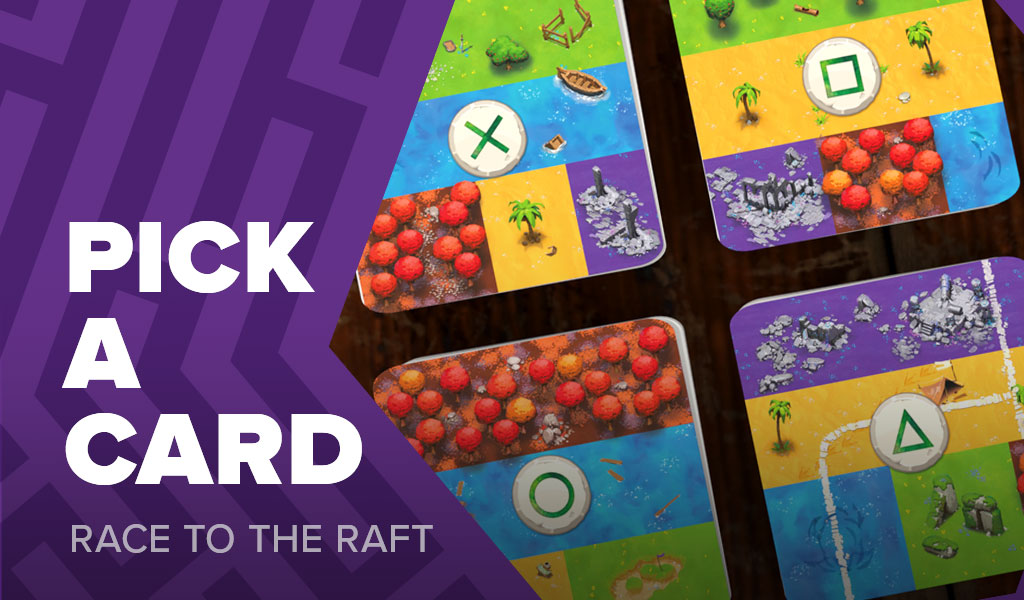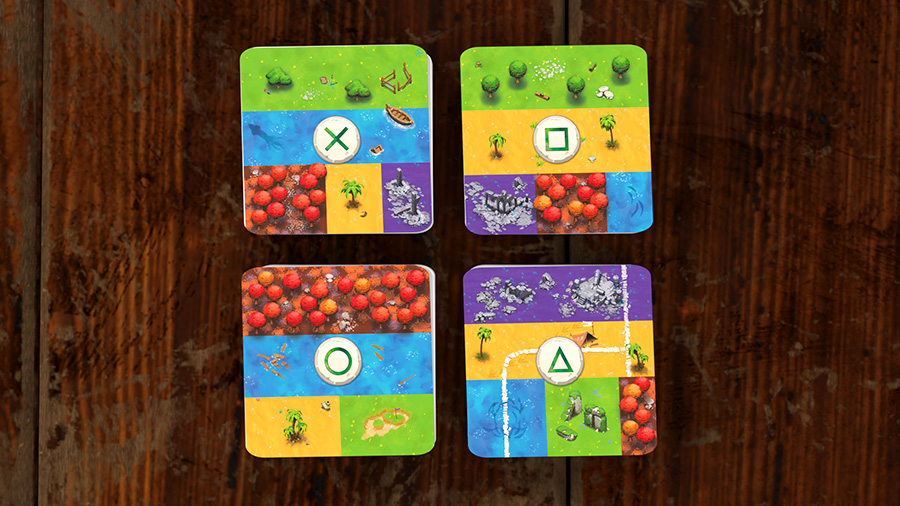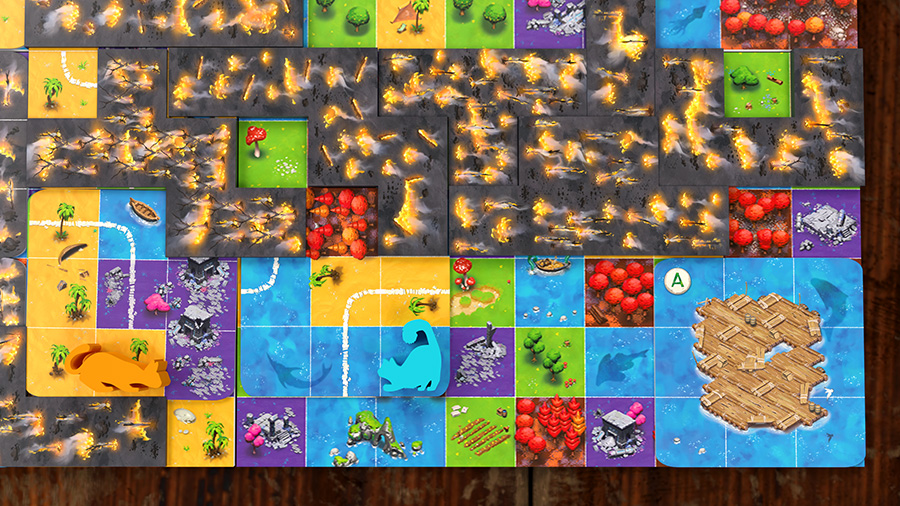Choosing cards in Race to the Raft

On Wednesday I talked about the boards and cards in Race to the Raft and today I’d like to discuss how cards are selected.
This is one of my favourite systems in the game and creates some fantastic moments!
As a reminder, Race to the Raft is a cooperative game where you are trying to build pathways by placing cards on the island and connecting areas of the same colour.
The challenge
Getting the right cards is essential to winning the game, if you need a card containing blue water and only have cards with purple ruins then you’re going to be stuck. This meant players needed to have control over what cards they were getting, and drawing a random card from a deck wouldn’t work.
Adding to the challenge, each player must keep their cards a secret, no one else at the table may know what you have. This meant any sort of face-up display wouldn’t work as the other players would know what you picked.
I decided to tackle this challenge by introducing a push your luck style decision to picking a card, making card selection a critical but fun part of the experience.
Creating options
There are 100 pathway cards split into 4 decks of 25 cards, the Cross, Square, Circle, and Triangle decks.

The back of each deck shows the probability of getting each type of terrain within the deck.
For example, the Square deck shows roughly:
- 33% green grass
- 33% orange sand
- 14% red forests
- 12% purple ruins
- 8% blue water
Each card contains 9 squares giving us 225 squares of terrain in each deck.
With 33% of the back of the card being green grass, we know roughly 75 of those 225 squares will be green grass. That might mean some cards have 9 grass squares, others may have none, but our chances of getting grass are much higher than if we took a card from the Circle or Triangle decks.
With the backs of each of the 4 decks showing the likelihood of getting terrain types, we now have decisions to make where we have some control.
The choosing process
A round starts with every player having no cards, a discussion happens, and then everyone draws 3 cards. You can talk as much as you want but as soon as someone takes a card, no one may speak until everyone has 3 cards.
You may take cards in any combination (for example 3 squares or 1 square and 2 circles), but you can not look at the cards you’ve drawn until you’ve taken all 3.
Each round will begin with players assessing the current situation on the island, discussing what they want to do, and then working out what decks to draw from.
I love watching people try to work out what gives them the best chance, how much they want to push their luck, and the sighs and cheers when it goes well or ends badly!
What would you do?
Let’s look at a simple example of how this might play out in a 2-player game, it’s the start of a round and the island looks like this.

The Orange and Blue cats are both stuck below some fire tiles and the only option left for getting them to the raft is a straight line to the right.
Remember, we can’t place cards on top of cats so to win the game we need to:
- Place a card with 3 blue water squares
- Move our blue cat
- Place 2-3 cards with orange sand squares
- Move our orange cat
With 2-players about to draw 3 cards each, we’ll be selecting 6 cards in total.
Do you:
- Take 6 cards from the Circle deck, which is 32% blue and 16% orange, giving you the best chance of getting your 1 blue card and a reasonable chance of getting some orange cards.
- Take 6 cards from the Square deck, which is 33% orange and 8% blue, giving you a high chance of getting several of your orange cards but risking you might not get any good blue cards.
Maybe you would take 3 from Circle and 3 from Square, or 4 from Circle and 2 from Square. There is no right option and maybe something else will seem better in the moment!
Which 6 cards would you choose?
Frank West
Frank West is a gamer and designer based in Bristol, UK. He published his first board game, The City of Kings, in 2018 and now works on other games and organising events in the local area. His goal? To design and publish games focusing on immersive themes, fun mechanics and beautiful components. If you have any questions or would just like a chat, feel free to get in touch at any time!

